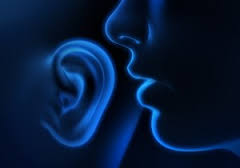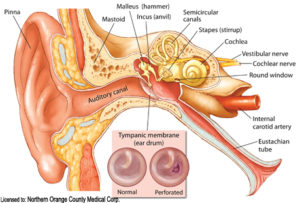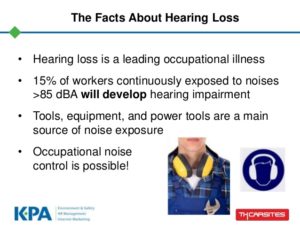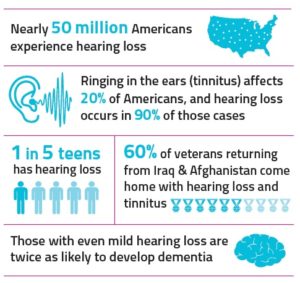QUOTE FOR WEDNESDAY:
“New research says pregnant women should include the annual flu shot in their care plan. On July 20th, 2018, the American College of Obstetricians and Gynecologists (ACOG) said immunization is an essential part of care for adults, including pregnant women. According to the ACOG’s immunization committee’s opinion, there is no evidence of adverse fetal effects from vaccinating pregnant women with inactivated virus, bacterial vaccines, or toxoids, and a growing body of data demonstrate the safety of such use.”
American College of Obstetricians and Gynecologists
QUOTE FOR TUESDAY:
Influenza Pandemics: “The 1889–1890 flu pandemic, also known as Russian Flu, had a very high attack and mortality rate, causing around a million fatalities. Total mortality attributable to the 1918 Spanish Flu was probably around 40 million. The “Asian Flu”, 1957–58. An H2N2 virus caused about 70,000 deaths in the United States. First seen in China late Feb 1957 caused about 2 million deaths globally. The “Hong Kong Flu”, 1968–69. An H3N2 caused about 34,000 deaths in the United States & killed approximately one million people worldwide . In the spring of 2009, a novel influenza A (H1N1) virus emerged. It was detected first in the United States and spread quickly across the United States and the world. This new H1N1 virus contained a unique combination of influenza genes not previously identified in animals or people. This virus was designated as influenza A (H1N1)pdm09 virus. The (H1N1)pdm09 virus was very different from H1N1 viruses that were circulating at that time; vaccination with seasonal flu vaccines thus offered little cross-protection against (H1N1)pdm09 virus infection. While a monovalent (H1N1)pdm09 vaccine was produced, it was not available in large quantities until late November, which was after the peak of illness during the second wave had come and gone in the United States. From April 12, 2009 to April 10, 2010, CDC estimated that there were 60.8 million cases (range: 43.3-89.3 million), 274,304 hospitalizations (195,086-402,719), and 12,469 deaths (8868-18,306) in the United States due to the (H1N1)pdm09 virus.* CDC estimated that between 151,700 and 575,400 people worldwide died from 2009 H1N1 virus infection during the first year the virus circulated.”
Centers for Disease Control and Prevention
QUOTE FOR MONDAY:
“1. Choose age appropriate toys by reading the age label on the toy. For children younger than 3, avoid toys with small parts, which can cause choking. In particular avoid deflated or broken balloons, small parts or small balls. 2. Scooters and other riding toys – Riding toys, skateboards and in-line skates go fast, and falls could be deadly. Helmets & safety gear always WEAR. 3.)Whether marketed for children or adults, building and play sets with small magnets should also be kept away from small children (prevents magnets from being swallowed). ”
On Safety (onsafety.cpsc.gov)
Safe Toys and Gift National Month
The Hard Facts
In 2011, 188,400 children under the age of 15 years were seen in emergency departments for toy-related injuries. That’s 516 kids every day. More than a third of those injured were children 5 and under.
Toys are the treasures of childhood. But if you’re not careful, toys can be hazardous, too.
According to the U.S. Consumer Product Safety Commission (CPSC), more than 250,000 toy-related injuries were treated in U.S. hospital emergency rooms in 2015. Of those, about one-third involved kids under 5.
To keep your child safe, follow these guidelines when choosing toys.
- Pick age-appropriate toys. Most toys show a “recommended age” sticker, which can be used as a starting point in the selection process. Be realistic about your child’s abilities and maturity level when choosing an age-appropriate toy. Toys that have projectiles, for example, are never suitable for a child under age 4 – and even some 6-year-olds aren’t mature enough to handle them. Likewise, if your 3-year-old still puts everything into her mouth, wait a little longer to give her toys and games with small parts and pieces.
- Consider your child’s age when purchasing a toy or game. It’s worth a second to read the instructions and warning labels to make sure it’s just right for your child.
- Choose toys that are well-made. Used toys passed down from older relatives or siblings or bought at yard sales can be worn or frayed, which can sometimes be dangerous. Check all toys – new or used – for buttons, batteries, yarn, ribbons, eyes, beads, and plastic parts that could easily be chewed or snapped off. Make sure a stuffed animal’s tail is securely sewn on and the seams of the body are reinforced. Parts on other toys should be securely attached. Make sure there are no sharp edges and the paint is not peeling. Before you’ve settled on the perfect toy, check to make sure there aren’t any small parts or other potential choking hazard.
- Think big. Until your child turns 3, toy parts should be bigger than his mouth to prevent the possibility of choking. To determine whether a toy poses a choking risk, try fitting it through a toilet paper roll. If a toy or part of a toy can fit inside the cylinder, it’s not safe. Keep a special eye on small game pieces that may be a choking hazard for young children. While these kinds of games are great for older kids, they can pose a potential danger for younger, curious siblings.
- Make sure your child is physically ready for the toy. For example, parents of older kids may buy a bike one size too big so as not to have to buy a new bike the next year. This tactic can lead to serious injury if a child doesn’t have the physical skills to control the bigger bike.
- Skip the balloons. They may be cheerful party decorations and fun to bounce around, but latex balloons are the main cause of toy-related choking fatalities in children. When ingested, uninflated balloons (or pieces of burst balloons) can form a tight seal in a child’s airway and make it impossible to breathe.
- Don’t pick heavy toys. Could your child be harmed if it fell on her? If so, pass.
Top Tip:
- After play time is over, use a bin or container to store toys for next time. Make sure there are no holes or hinges that could catch little fingers.
QUOTE FOR THE WEEKEND:
“Most people recover fully from even the most severe cases of Guillain-Barré syndrome. Severe cases of Guillain-Barré syndrome are rare, but can result in near-total paralysis.”
World Health Organization
QUOTE FOR FRIDAY:
“May 18, 2018 – The exact cause of Guillain–Barre syndrome isn’t known. … In AIDP, the most common form of Guillain–Barre syndrome in the U.S., the nerves‘ protective covering (myelin sheath) is damaged. The damage prevents nerves from transmitting signals to your brain, causing weakness, numbness or paralysis.”
MAYO CLINIC
QUOTE FOR THURSDAY:
“Key Facts:
-Guillain-Barré syndrome (GBS) is a rare condition in which a person’s immune system attacks the peripheral nerves.
-People of all ages can be affected, but it is more common in adults and in males.
-Most people recover fully from even the most severe cases of Guillain-Barré syndrome.
World Health Organization
”
QUOTE FOR WEDNESDAY:
“Certain times of the year are more difficult than others to stick to healthy eating, and the holidays are certainly no exception! With parties, festivities, and traditions mostly centered on an abundance of delicious treats, snacks, and meals.”
Sunwarrior
Hearing Loss & how health impacts the Diagnosis
Men are more likely to experience hearing loss than women.
Of adults ages 65 and older in the United States, 12.3 percent of men and nearly 14 percent of women are affected by tinnitus. Tinnitus is identified more frequently in white individuals and the prevalence of tinnitus is almost twice as frequent in the South as in the Northeast.
Approximately 17 percent (36 million) of American adults report some degree of hearing loss.
There is a strong relationship between age and reported hearing loss: 18 percent of American adults 45-64 years old, 30 percent of adults 65-74 years old, and 47 percent of adults 75 years old or older have a hearing loss.
About 2 to 3 out of every 1,000 children in the United States are born deaf or hard-of-hearing. Nine out of every 10 children who are born deaf are born to parents who can hear.
The NIDCD estimates that approximately 15 percent (26 million) of Americans between the ages of 20 and 69 have high frequency hearing loss due to exposure to loud sounds or noise at work or in leisure activities.
Only 1 out of 5 people who could benefit from a hearing aid actually wears one.
Three out of 4 children experience ear infection (otitis media) by the time they are 3 years old.
Roughly 25 million Americans have experienced tinnitus.
Approximately 188,000 people worldwide have received cochlear implants. In the United States, roughly 41,500 adults and 25,500 children have received them.
Approximately 4,000 new cases of sudden deafness occur each year in the United States. Hearing loss affects only 1 ear in 9 out of 10 people who experience sudden deafness. Only 10 to 15 percent of patients with sudden deafness know what caused their loss.
Approximately 615,000 individuals have been diagnosed with Ménière’s disease in the United States. Another 45,500 are newly diagnosed each year.
Approximately 3 to 6 percent of all deaf children and perhaps another 3 to 6 percent of hard-of-hearing children have Usher syndrome. In developed countries such as the United States, about 4 babies in every 100,000 births have Usher syndrome.
One out of every 100,000 individuals per year develops an acoustic neurinoma (vestibular schwannoma).
High levels of cotinine, the chemical that indicates exposure to tobacco smoke and second-hand smoke has been directly linked to higher risks of some types of hearing loss. **
More than 500 million people around the world are experiencing some form of hearing loss right now. Are you one of them?
Share :
If you have hearing loss, you are not alone. About one in six people experience some degree of hearing impairment over the course of their lives.
The effects may not be obvious…
Hearing loss affects people in different ways. Left undiagnosed or untreated, it can damage communications and erode relationships. Over time, hearing loss may degenerate from a strictly physical condition to a psychological one, which is just one of the reasons it is so important to seek a solution promptly. For most people with hearing loss, there is help. Properly fitted hearing aids improve communication for at least 90 percent of people with hearing loss.[1]
The cause of hearing loss may not be clear…
Hearing loss is not just the result of attending loud concerts or a factor of the aging process. Illness and infections can also play a part in damaging your hearing. A University of Wisconsin Medical School 2001 study[2] revealed that hearing loss occurred in nearly 80% of those who may have suffered from a heart attack. They further determined that individuals who exercised at least once a week experienced a 32 percent reduction in the risk of suffering from hearing loss compared to those who did not work out.
Other health issues associated with either temporary or permanent hearing loss include the following:
- Sluggish or poor blood flow to the ear
- High blood pressure
- Sickle Cell Disease
- DiabetesMany other factors can lead to hearing loss, including your family history, repeated exposure to loud noises, injuries, and smoking
- No matter what effects you are experiencing due to hearing loss or the source of your condition, the next steps are obvious. Contact your family doctor, specialist, audiologist, or other hearing care professional to get your hearing tested. You will be surprised how many options are available to help you regain as much of your lost hearing as possible.Recommended to check with your md on any changes with diet or exercise especially if diagnosed already with disease or illness for your safety.
- There are options you can do towards prevention of hearing loss. You can start with keeping your ears cleaned routinely with having the doctor checking your ears every 6 months to yearly. You can even live healthier and being able to control what your body is exposed to in eating better foods of the 4 food groups, perform exercise in your routine life, if not daily then 2-3 times a week (from walking fast to working out in a gym). You can also keep your weight in a therapeutic range (all factors in prevention of diabetes II, and high B/P that can cause hearing loss.). At the same time, do not smoke or expose yourself to a lot of second hand smoking or a lot of extremely loud noises from work areas to concerts without wearing ear plugs for safety. You can also keep your ears cleaned with having the doctor check your ears every 6 months to yearly. So there are things you can do to help prevent hearing loss.
- But the options for improvement are many:
- Screenings for diabetes and other conditions typically do not include hearing tests. If you have one of these conditions, it’s probably a good idea to ask for a referral to a hearing care professional who can conduct a hearing screening to see if you are suffering from any kind of hearing loss.
- REFERENCES:
- 1-World Health Organization.
- 3-National Institute on Deafness and Other Communication Disorders (NIDCD).
- 2-Torre P 3rd, Cruickshanks KJ, Klein BE, Klein R, Nondahl DM. (2005). The association between cardiovascular disease and cochlear function in older adults.
- 3-National Institute on Deafness and Other Communication Disorders (NIDCD). **




